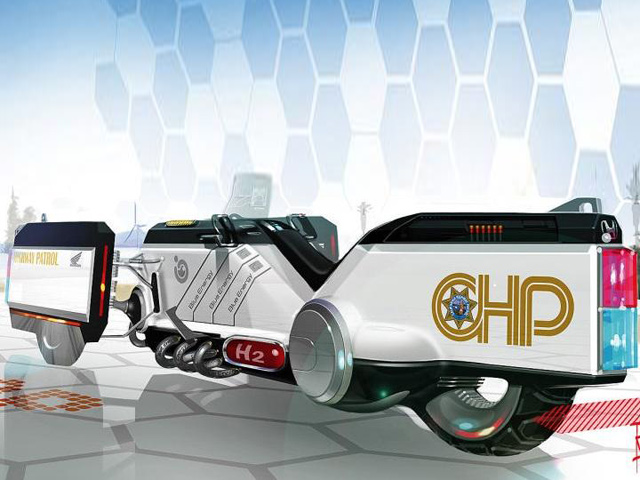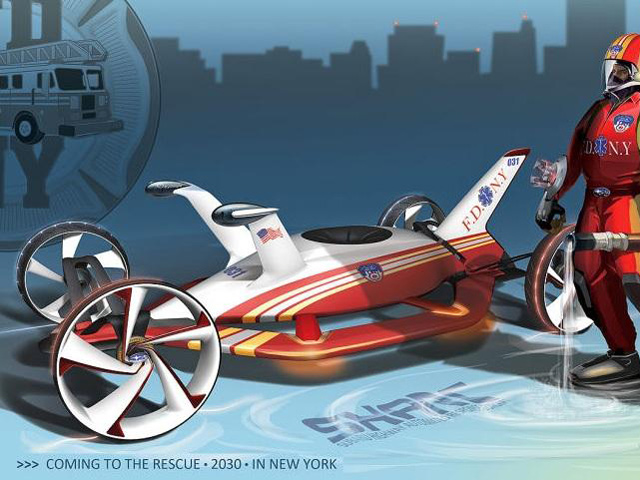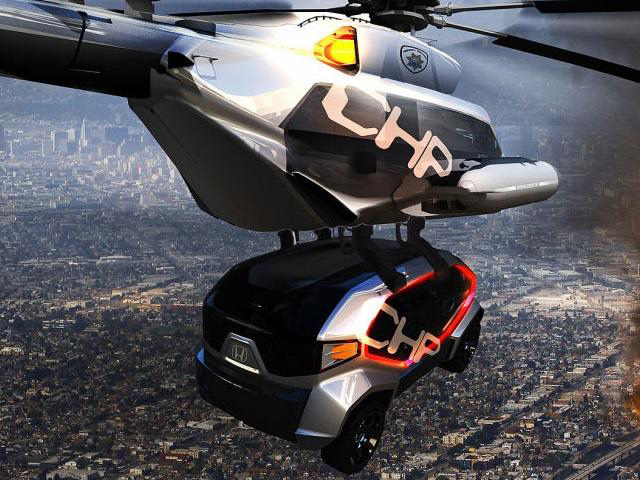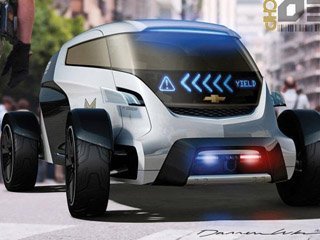BMW's entry comes from its DesignworksUSA team, which chose LA as the backdrop for its E-Patrol Human-Drone Pursuit Vehicle. The design centers on a modular structure and drone technology, with the main body capable of deploying three drones.
So when trying to catch a bad guy in heavy traffic, the patrolman in the two-passenger vehicle can deploy the flying drone or one of two single wheel drones to chase them down and report back. GM's Volt Squad is a three-vehicle fleet using an advanced, electronic propulsion system designed by its Advanced Design California team. Each vehicle has a defined duty to observe, pursue, and engage. Honda's Advanced Design Studios in California and Tokyo both created an entry for the competition. In the US, they came up with a two-vehicle system dubbed the CHP Drone Squad.
It consists of an Auto-Drone, which can be manned or unmanned and capable of deploying Moto-Drones. These are unmanned motorcycles rigged for response or rescue missions. The Japanese arm designed a "CHiPs" Traffic Crawler, a new patrol vehicle that offers sporty mobility and robustness to cope with severe traffic conditions.
Mercedes-Benz' Advanced Design Center in Cali created the Ener-G-Force, an environmentally friendly SUV based on the G-Class that will assist police deal with crowded roads and electronically-monitored and controlled traffic.
Subaru's Research and Development team concocted the SHARC, or Subaru Highway Automated Response Concept, a highway patrol vehicle powered by renewable energy and operated autonomously that offers an environmentally conscious solution for 24-hour monitoring, protection and rapid emergency response.
The winner of the Design Challenge, judged by a team of art and design experts and a member of the California Highway 11-99 Foundation, will be announced on 25 November.






Nouvelles connexes



